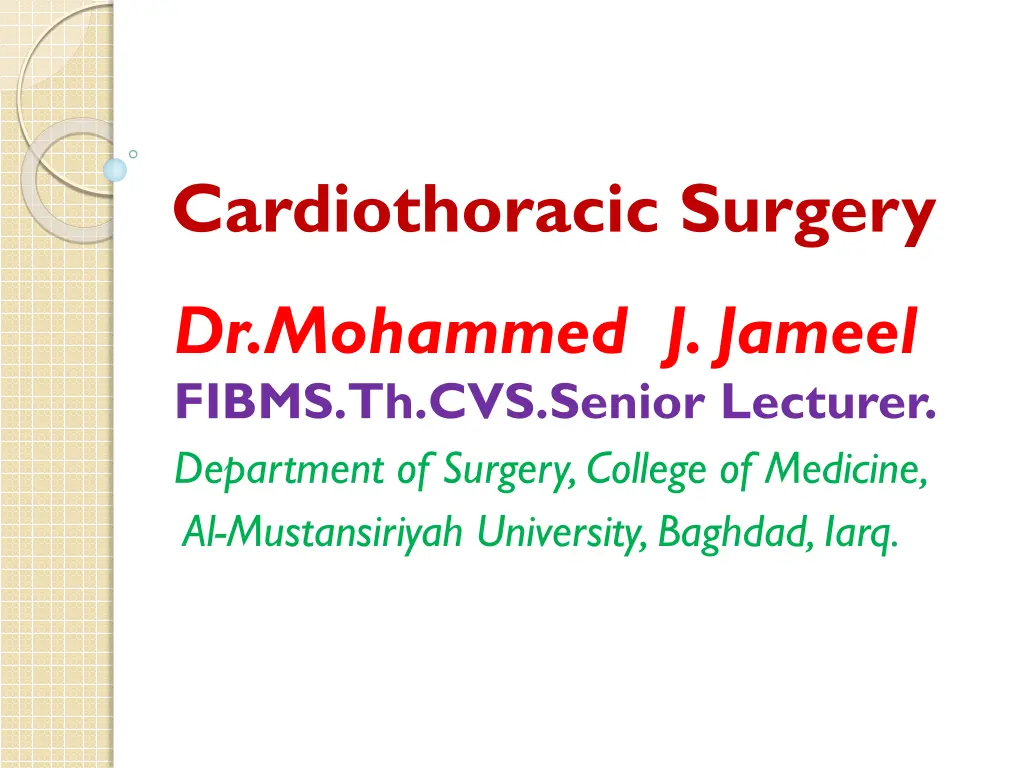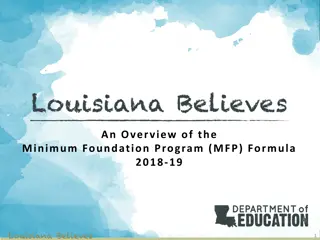
Cardiac Trauma: Types, Clinical Presentation, and Management
Learn about the types of cardiac trauma, including penetrating and blunt injuries, their clinical presentation, factors affecting mortality, and management strategies such as pericardiocentesis and surgical interventions. Understand the importance of timely diagnosis and treatment in cases of cardiac temponade and hemorrhagic shock. Explore the role of investigations like echocardiography and chest films in evaluating and managing cardiac trauma.
Download Presentation

Please find below an Image/Link to download the presentation.
The content on the website is provided AS IS for your information and personal use only. It may not be sold, licensed, or shared on other websites without obtaining consent from the author. If you encounter any issues during the download, it is possible that the publisher has removed the file from their server.
You are allowed to download the files provided on this website for personal or commercial use, subject to the condition that they are used lawfully. All files are the property of their respective owners.
The content on the website is provided AS IS for your information and personal use only. It may not be sold, licensed, or shared on other websites without obtaining consent from the author.
E N D
Presentation Transcript
Cardiothoracic Surgery Dr.Mohammed J. Jameel FIBMS.Th.CVS.Senior Lecturer. Department of Surgery, College of Medicine, Al-Mustansiriyah University, Baghdad, Iarq.
Lec: 4 Cardiac Trauma May be either :- 2. PentratingTrauma:-Which may be due to: a. Stab wound b. gun shot c. iatrogenic e.g by chest tube. Clinical Presentation depends on: 1.Site of injury 2. mode of injury 3. associated injuries The Right ventricle is mostly involved by penetrating injuries in 42% of cases because it occupies the largest percent of the anterior surface area of heart followed by Left ventricle in 32% of cases and Right atrium in 15% of cases. 1. Blunt Trauma
Factor affect Mortality from penetrating injuries may be due to 1. Coronary artery injury 2. multiple chamber injury 3.Isolated left side injury 4.commonuted tear of single chamber 5.Isolated right side chamber injury 6. Tangential injury which does not penetrate the endocardium Clinical Presentation A. Temponade:- occur in 80% of cases of stab wound injuries and 20% of gunshot injuries. B. Haemorrhagic shock:- occurs in 20% of stab wound injuries and 80% of gunshot injuries.
Cardiac Temponad:- Occur due to small tears in the pericardium and myocardium, here little or transient haemorrhage will be sealed by contraction of myocardial muscles, the collection of 100-150 ml. Of blood inside the pericardium will press on the heart and leads to classical signs of Becks Tried which are: 1. Hypotention 2. Distended neck veins 3. Muffled heart sounds Other features may be present like tachycardia, shortness of breath, pulses paradoxus. Haemorrhagic shock:- Occurs due to large tear in the heart and pericardium which leads to:- 1. Sever bleeding 2. sever hypotension and bradycardia 3. flat neck. veins 4. high mortality
Investigations:- Chest Film:- In temponade is of no benefit as it is an acute event there is no enough time for pericardium to distend; while in haemorrhagic shock we may see haziness and irregularity of cardiac boarder but the patient may not live long enough to do chest film. Echo: - requires cooperative patient and well trained personal and associated with 5% false negative rate. Pericardiocentesis :- must be done with great care and better to be guided by echo and patient must afford pain ; in 15% of cases the blood may be clotted. Subxyphoid pericardial window:- can be done under local anaesthesia and when blood found it is evacuated easily and the incision can be converted to median sternotomy to repair the cardiac injury.
Management :- 1. Secure the air ways, if the patient is not breathing spontaneously endotracheal tube must be inserted and oxygen must be delivered by umbo back or ventilator. 2. Establish 2 or 3 I.V lines to deliver crystalloid and/ or colloid, in Temponade this is of diagnostic value since it improve general condition of the patient transiently. 3.Emergency room operation is indicated in the following condition Low Blood Pressure or Agonal breathing. Rapid deterioration. Patient can not be stabilized by usual resuscitative measures. Strong suspect of cardiac injury. The operation is carried out either by Median Sternotomy or Left Anterior Thoracotomy.
Methods of repair of cardiac injury. 1. Atrial injury: put a side clamp and suture the tear. 2. Large vessel injury : repaired like atrial injury. 3. Small hole in the ventricle :suture with pledgete 4.injury beside coronary artery: suture with pledgete beneath the coronary artery 5.Coronary artery injury: if small ligate the artery ,if large ligate and do coronary bypass graft. 6.Intracardiac injury: can be manged later on unless it is sever.
Blunt Cardiac Trauma:-Usually produce cardiac contusion which may produce heart block, arrhythmia and decrease contractility sometimes damage to atrial septum or ventricular septum may occur or damage to valve may occur. Investigation :- 1.Cardiac enzmes usually elevated 2. ECG shows rhythm disturbance 3. Echo showsabnormal contractility Management :- Simple injury usually self limited and improve spontenously. Sever injuryleads to poor out comelike cardiac arrest.
Cardiopulmonary resuscitation:-Measures done to manage person sustain cardiopulmonary arrest. cardiac arrest may be due to arrhythmia which may be due to a.Coronary artery diseases b. Anoxia C. electrolyte disturbance d. Drug toxicity. Diagnosis is done by confirmation of 1. unconsciousness 2. abscence of central pulse and breathing for 15 seconds Cardiac arrest leads to hypoxia and anerobic metabolism Management:- 1. Secure air ways and breathing. 2. establish I.V lines 3. Cardiac massage either closed chest massage or open cardiac massage. 4. ECG monitoring 5. drugs like adrenaline, xylocain, NaHCO3, insulin+glucose for hyperkalemia 6. Temporary transvenous or extracardiac pacemaker






















